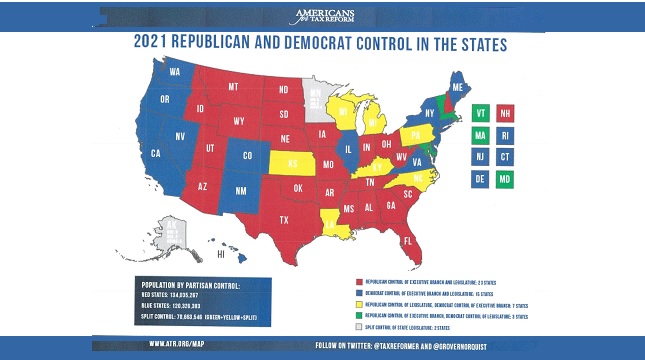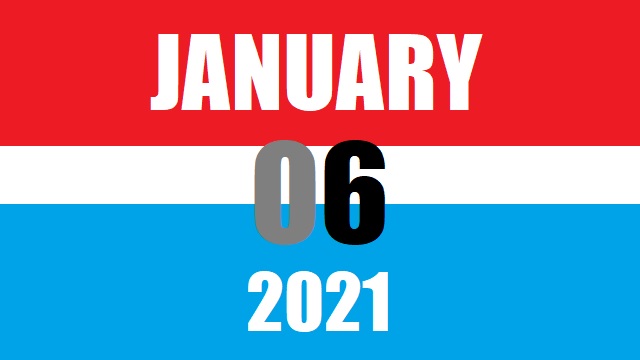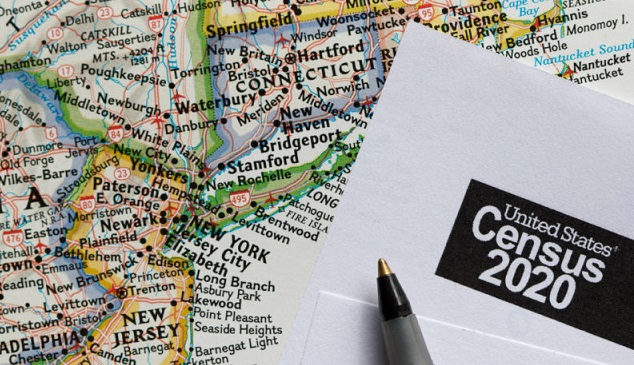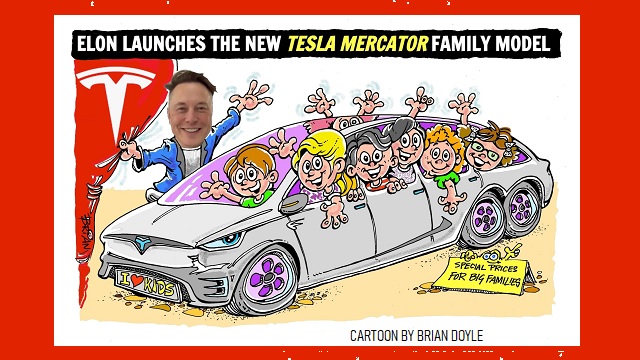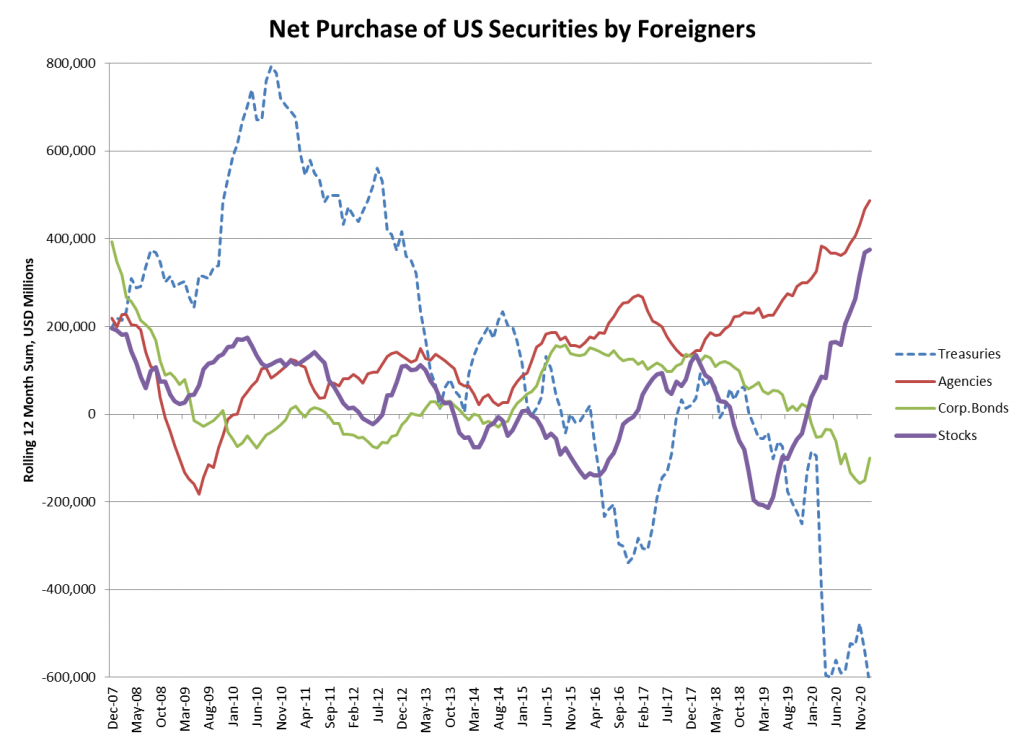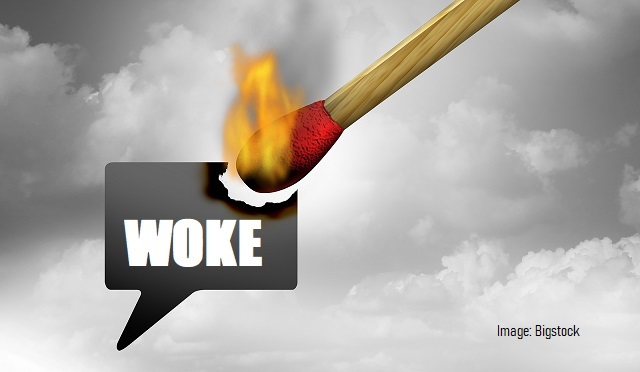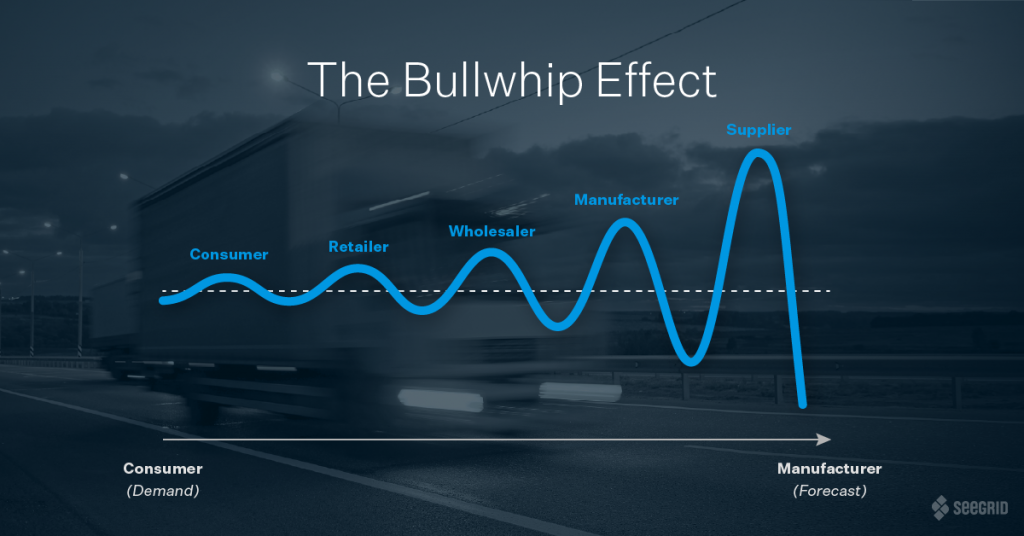By James R. Rogers
As we stagger toward the endgame of the Covid-19 pandemic, several “bigger picture” lessons come to mind thinking ahead to the next pandemic. First, the most draconian policy responses resulted from the failure of the state and national governments to prepare for a pandemic that had been predicted for decades prior to 2020. Secondly, the extraordinary power delegated to public health authorities during health emergencies makes the checks and balances provided by democratically elected, non-expert public officials more critical, not less. Third, when “radical uncertainty” exists—that is, when underlying probability distributions are unknown—the short-run temptation for public officials and public health experts to bluster is high. Yet blustering comes at the high cost of loss of public trust. Finally, creating policies that “follow the science” needs to include following the science of risk perception, a science that tells us that involuntarily imposed policy risks are weighted far more heavily by the public than voluntarily assumed risks—perhaps on the order of 1,000 times more heavily.
Lack of Government Preparation Caused Costly Policy Overreaction
Popular analyses of policy responses to the pandemic typically start with the arrival and spread of Covid-19 in spring 2020. We then debate who did too little or too much in response to the emergency as the virus spread and evolved. The arrival of Covid-19 in spring 2020, however, is not the proper baseline. While we did not know the nature of the particular threat prior to the advent of the current pandemic, for decades prior to Covid-19’s arrival public health authorities warned government officials that the arrival of a pandemic was a matter of “when,” not “if.”
The draconian policy responses of spring and summer 2020—the business, school and organization closure orders, and home confinement requirements—seemed arguably necessary at the time only because of the earlier failure of American officials to construct a public health infrastructure that could have responded in a more narrowly tailored fashion to a pandemic. In particular, a contact-tracing infrastructure—one that would quarantine only specifically identified sick or exposed individuals rather than entire populations regardless of risk—takes extended preparation and organization. It could only have been created in the years prior to the arrival of the epidemic.
Recall, after all, the numerous articles and reports in the decades prior to Covid warning that the arrival of a pandemic was a “when” not an “if.” The reports included advance warning of pandemics in general as well as of Covid-like diseases in particular. For example, the shortlist of “public health challenges of the Twenty-First Century” reported by the Journal of the American Medical Association in 2000 included the need to “prepare to respond to emerging infectious diseases.” The need for a public health infrastructure to respond to threats like Covid-19 was well-known long before Covid-19 arrived on American shores.
The panicked adoption of draconian, poorly tailored closure policies resulted directly from the earlier negligence of government officials in the years prior to the advent of Covid.
The cost of this negligence does not derive, as some stories suggest, merely from the loss of advance time that could have allowed the earlier development of immunizations. Even with the advent of mRNA vaccine technology that significantly speeds up this process, that seems too high of a bar. The need remains to craft immunizations to specific diseases, and these are known only once a pandemic begins. Rather, in the early stage of a pandemic—before a vaccine can be developed—the isolation and quarantine of sick people is a necessary, and traditional, response to the spread of disease.
The difference between the traditional response, however, and what occurred in 2020, is whether America’s public health infrastructure would identify and respond to sick people or whether, because of the lack of a contact tracing infrastructure, vast segments of the healthy public would be subject to extraordinarily costly closure and isolation requirements.
State governors believed population-wide closure and isolation orders were needed in response to the advent of the pandemic because of the unavailability of less burdensome but equally effective alternatives. Effective contact tracing infrastructures cannot be innovated quickly.
The argument between Democrats and Republicans over the cost-effectiveness of broad closure orders is much like debating the best way to find the horse after it escaped from the barn. Continuing disputes over the proper policy responses needed in spring and summer 2020 ignore that whether Democratic or Republican, the development of an appropriate contact tracing infrastructure in the years prior to Covid would have achieved the goals of the closure and home confinement orders as well, if not better than those orders. Yet vigorous contact-tracing policies would more narrowly focus on sick people only, and so would have been far less socially and economically costly.
Another reason state governments failed to prepare adequately for the pandemic is this: While public health regulation has always been—and remains—primarily a state obligation under America’s “complex constitution” that divides sovereignty between two levels of government, the grasping authority of the national government created moral hazard incentives for states. State officials might be forgiven for thinking that the national government intended to occupy the public health field. At least state officials can assert that as a rationalization for their own negligent inaction.
The national government certainly has primary responsibility for regulating international movement into the United States. It also has authority related to interstate movement—although states absolutely have control over their borders for public health purposes as long as border-control policies do not discriminate against interstate commerce.
Yet two generations of expanding federal authority, and a failure of scholars who should know better to understand the continuing advantages of state-level responsibility, even for epidemics, had many state officials wrongly looking for leadership from Washington. Leadership appropriately remains where it has traditionally resided: in the states.
Yet even commentators who should know better miss the argument. Yale Law Professor John Fabian Witt, for example, sneered at the value of state-level policymaking in his recent book, American Contagions: Epidemics and Law from Smallpox to Covid-19:
Some applauded decentralization given that different infection rates seemed to warrant different responses, depending on the region. But of course nothing in a centralized responses would have required a one-size-fits-all federal policy. Central decision makers routinely deliver aid to particular regions of the country.
To be sure, there is an informational rationale for state-level policy-making. Both because state officials are closer to the problem and because they have tighter electoral incentives to attend to that information. But the case for state-level regulation does not reside only in an informational rationale, as Witt wrongly suggests it does.
Rather, people in different states also hold different policy preferences, including different preferences over levels of government intervention and over their preference for risk. Even given an identical public health threat, the voters of Massachusetts may have different preferences over how their government responds to that threat than do the voters of Texas.
If we ask what type of institutional structure best takes account of both local information and local policy preferences, there’s a straightforward answer: institutions that look exactly like state governments. Leaving pandemic policies for the states primarily in the hands of state governments continues to be a strength of America’s public health system, not a weakness. The expectations formed by two generations of relentless centralization in the U.S. sowed confusion over the appropriate spheres of policy leadership in public health, and undermined incentives for state officials to take appropriate leadership in responding to the pandemic early on.
The Tunnel Vision of Public Health Experts Requires the Check and Balance of Elected Politicians
The second issue America’s experience with Covid-19 has highlighted is the dysfunctional interaction that results from delegating significant legislative and executive power to public health authorities when combined with the well-known myopia of public health experts who see only the cost of disease and are blind to the social and economic costs of remediation policies. Democratically elected officials have been pressured to defer blindly to public health experts and discouraged from asserting their independent judgment over policy options and from taking all interests into account in selecting among policy options. Given the institutional and behavioral environment of public emergencies, the checks and balances of democratically elected political authorities are all the more necessary during pandemics, not less.
Consider, first, the changed institutional environment during public health emergencies like pandemics. The speed with which policy responses in pandemics need to be implemented, combined with the lack of prior information regarding the direction from which threats will come, means that states must confer a great deal of discretionary power on public health authorities. Energetic action is necessary, so legislative, executive, and even judicial authority devolves to the public health authorities in times of emergencies.
For example, in the 1922 case of People ex rel Barmore v. Robertson, the Illinois Supreme Court articulated the classic rationale for the vast legislative and executive discretion given to public health authorities to respond to public health emergencies:
Under a general statute giving to the State department of health power to restrict and suppress contagious and infectious diseases, such department has authority to designate such diseases as are contagious and infectious, and the law is not void for this reason on the ground that it delegates legislative power. The necessity of delegating to an administrative body the power to determine what is a contagious and infectious disease and giving the body authority to take necessary steps to restrict and suppress such disease is apparent to everyone who has followed recent events [of the 1918 flu epidemic]. Legislatures cannot anticipate all the contagious and infectious diseases that may break out in a community, and to limit the activities of the health authorities to those diseases named by the legislature in the act creating the administrative body would oftentimes endanger the health and the lives of the people. . . . In emergencies of this character it is indispensable to the preservation of public health that some administrative body should be clothed with authority to make adequate rules which have the force of law and to put these rules and regulations into effect promptly. Under these general powers the State department of health has authority to isolate persons who are throwing off disease germs and are thereby endangering the public health.
Beyond the delegation of broad legislative and executive authority to public health officials in order to respond to public health emergencies, judicial power is often included as well. For example, in State ex rel. McBride v. Superior Court for King County, after one Francis Williams was arrested for disorderly conduct he was given a medical test that indicated he had syphilis. The public health authorities subsequently ordered Williams confined to the state hospital for the duration of his illness. This was in 1918, before there was a cure for syphilis.
Williams contested the test result, claiming he was targeted by the police, and asked that a physician of his own choice be allowed to administer another test. After the Public Health Board rejected Williams’ challenge to its decision, he filed a writ of habeas corpus in court, asking that a judge review the grounds and process on which he was ordered indefinitely confined. The Washington Supreme Court denied the writ, holding that the hearing before the health board was all the process that was due under the circumstances. Despite Williams’ arrest for a minor criminal offense, his subsequent confinement would be indeterminate, and he would be without any access to courts to challenge the basis for his confinement. All this because his confinement resulted from an assertion of the state’s public health authority rather than as a matter of criminal law.
During public health emergencies like pandemics, we have an institutional environment in which legislative, executive, and perhaps even judicial powers accumulate in the hands of public health authorities. This is necessary. That it is necessary, however, does not imply that ordinary checks and balances should be dispensed with. Recall Madison’s well-known caveat in Federalist 47 that “The accumulation of all powers, legislative, executive, and judiciary, in the same hands, whether of one, a few, or many . . . may justly be pronounced the very definition of tyranny.” The greater the need to concentrate power the stronger the need for some authority to check the exercise of the outer limits of that power.
But it is the combination of well-known behavioral dynamics in the public health community along with heightened institutional concentrations of power during public health emergencies that magnifies the crucial need for political checks and balances. Even public health experts themselves recognize that public health experts have tunnel vision during health emergencies in which they focus singularly on the narrow medical threat itself and prioritize mitigating disease no matter the cost. Lawrence Gostin and Lindsay Wiley observe in their textbook, Public Health Law, that on the one hand, “The public health community often advocates for managing risk according to the precautionary principle, which favors interventions under conditions of uncertainty,” yet, on the other hand, it’s possible that “overly precautionary regulatory burdens stifle economic progress and scientific innovation and thus may ultimately harm health.”
While the old “science/value” dichotomy is out of fashion today, it nonetheless points inescapably to a two-step process when turning science into policy. To wit, science can tell us what is, but it cannot tell us what policies we should choose based on what is. The latter inescapably requires that a judgment be made. The oft-invoked “follow-the-science” mantra obscures this division; and it is sometimes asserted precisely in order to obscure it—as if facts themselves imply their own policy response without the need for human discernment and judgment.
We can all respect the passion and zealous advocacy of public health experts and officials. Yet political “checks and balances” exist classically to rein in too much passion. Given the freighted institutional environment and a behavioral/professional context that invites experts to ignore the broader costs and risks of unchecked power—even when we can stipulate good intentions—elected politicians should be encouraged, not discouraged, to use their own best, independent judgment in determining best policies for their states. They should be encouraged to draw on all information, information not only provided by their health experts focused narrowly on disease, but also considering all the social and economic implications of different policy options. The emergency nature of epidemics makes this manifestly political task of democratically elected officials all more crucial, not less so.
“Radical Uncertainty” and Addressing the Public
The third thing we’ve learned from the Covid-19 pandemic is related to the second, but with two distinctions. First, the focus shifts from the interaction between public health experts and public officials to the interaction between public health experts and the public at large. Secondly, in the discussion above we assumed public health experts had access to scientific results even as they narrowly focused on epidemiology. The mantra, “follow the science,” assumes there is a science to follow. Yet pandemics can arise and progress much faster than the scientific analysis of those pandemics. Public health experts—and government officials—all face short-run incentives to hide the fact that they are often making policy recommendations and decisions ahead of the available science.
Commentators make a helpful distinction between “uncertainty” and “radical uncertainty.” In Donald Rumsfeld’s famous phrase, there is a difference between “known unknowns” and “unknown unknowns.” The distinction can be illustrated as a choice between two types of lotteries: one lottery takes place with a given (or known) probability distribution for the outcomes—”known unknowns”—the second lottery takes place without knowledge of the underlying probability distribution. An “unknown, unknown.”
In their well-known textbook on Public Health Law, for example, Gostin and Wiley tame the problem public health experts face when they merge the two very different problems in relating that public health experts seek to answer the question, “What is the appropriate course of action in the face of scientific uncertainty?” Indeed, it’s almost a misnomer to treat “radical uncertainty” as a species of “scientific uncertainty.” There is nothing scientific about possible outcomes characterized by radical uncertainty other than that scientists have no more of a clue about what’s going to happen than the rest of us do. This then becomes an especial problem when combined with the “tunnel vision” of public health experts and officials discussed above. Yet the temptation remains to take advantage of one’s “expertise” and opine anyway. When that occurs in a situation of radical uncertainty, however, experts are actually only reporting their personal policy preferences—which are no more scientific than anyone else’s—but claiming the deferential guise of “expert advice.”
The short-run temptation to get ahead of the science is entirely understandable: The public wants to know what needs to be done in the face of the emergency, both what the government needs to do and what they may need to do. There may even be a threat of panic; recall the grocery stores stripped of food and other household items in the early days of the pandemic.
Yet indulging the short-run temptation to opine ahead of the science can come with hefty medium- to long-term costs in the form of losing public trust. And reputation—scientific or otherwise—is easier to lose than to build. Opining in the face of radical uncertainty is little more than enacting a grown-up version of the “Boy who cried wolf.” It is critical that public health experts as well as public officials tell the public what they don’t know, or don’t yet know, in the face of quickly changing public health emergencies.
When “Follow the Science” Doesn’t Follow the Science
Finally, public discussion of the risk of the vaccine, or the health risk of wearing a mask, is almost universally styled as a choice between science versus those who happily embrace their ignorance of the science. “Vaccines will save hundreds of thousands while adverse reactions will hurt relatively few.” And I accept the COVID vaccines will save hundreds of thousands of more people than they injure. Nonetheless, attacking anti-vaxxers as “anti-science” ironically ignores an important line of scientific research on the perception of risk that started with an article by Chauncey Starr published in Science magazine. The article spawned a large and continuing scientific literature.
The nub of what Starr identified was to estimate some numbers for the intuitive point that, “As one would expect, we are loath to let others do unto us what we happily do to ourselves.” That is, people tend to be more risk-averse—by several orders of magnitude—when forced to make a choice by others than when their choice is unforced. Starr’s conclusion was that “the public is willing to accept ‘voluntary’ risks roughly 1,000 times greater than ‘involuntary risk.’” That is, people weigh involuntary risks far more heavily than they do risks they assume voluntarily. This fact can account for policy positions that commentators often dismiss as “ignorant” and “antiscience.”
There are two important points to note immediately from Starr’s analysis. The first is that people sweep disease-related risks in with voluntary risks. That is, many folks will consider the risk of contracting and dying from Covid as commensurate with, say, the risk of dying in an automobile accident on the way to the store. The magnification of the risk that Starr identifies applies to the human intervention—like mandatory vaccines—and not to the risk of Covid itself.
Secondly, we should not get sidetracked by taking Starr’s “1,000 times” estimation too literally. The point is that people weigh dying at the behest of another human more heavily than they weigh dying from their own choices or by an act of God or nature.
What this line of research provides, however, is an account for the otherwise puzzling attitudes of anti-vaxxers (and the even more puzzling attitudes of anti-maskers). To be sure, even at a ratio of 1,000 to one, the risk of the vaccine relative to the benefit still leans clearly in favor of the vaccine (and making it mandatory). Yet multiplying a low level of vaccination risk by 1,000 (or thereabouts) at least makes the order of magnitude more comparable. So it’s not as though skeptical attitudes toward the vaccine can derive only from being deliberately obtuse.
Consider, for example, the gamble in which for the price of $10 a person is offered this lottery: Win $50 with probability 0.5 and win $0 (nothing) with probability 0.5. The “scientific” answer—the answer of the expected value of the lottery—is that the person should take the gamble. (The expected value of the gamble after all is $25.) Yet the person who opts to keep $10 with certainty rather than risk losing it with probability 0.5 is not “ignorant” or “antiscience.” The person is just risk-averse. Perhaps more risk-averse than you or me, but there’s nothing right or wrong about one’s risk preferences. Preferences simply are. And recall, after all, that even good bets—those wagers with expected outcomes greater than their cost—exist in which large percentages of people, even large majorities of people, still lose their wager ex post.
At the social level (ignoring where the $50 comes from), we would want the entire population to take the lottery. Just as a social planner sees that many more people will be saved by mandating the vaccine than will lose their lives. But at the individual level, risk-averse individuals will protest being forced to take the gamble, even though it is a statistically “winning” gamble. And if enough of these folk live within a particular state, they may constitute a sizeable enough voting block to deter public officials from mandating the play. So, too, with vaccines (and masks), let alone business closure and home confinement orders.
Recognizing the nature of risk perception, and the difference human intervention can make in the way people perceive risks, allows us to understand where some of the fear comes from. Not fear of the disease, but fear of human intervention in response to a disease. Even when the raw statistical probabilities of harm are highly disproportionate. This allows a different type of engagement with skeptics—perhaps with a bit more patience and empathy—when considering pandemic policies other than simply attacking these folk as necessarily ignorant and anti-science.
The Virus and the Long-Term
These are a few lessons I think we can learn from our experience with Covid-19: Advance planning can reduce the cost and intrusiveness of interventions if and when pandemics arrive; checks and balances are a good thing even in times of emergencies—or especially in times of emergencies—and even when expert recommendations are checked and balanced by democratically accountable politicians; telling the public the truth that experts and officials don’t always know everything about a threat may be embarrassing in the short run but preserves, if not builds, long-term public trust. And people who may prefer the risk of illness relative to involuntary remedies are not necessarily ignorant or crazy. They may just have risk preferences different from yours or mine.
This does not mean that the government shouldn’t mandate when the evidence suggests that more lives will be saved by a mandate than lost. But recognizing the nature of risk preference might allow for a little more empathy and patience, and possibly allow more effective engagement with that part of the public relative to heaping them with contempt and denunciation.
*****
This article was published on December 5, 2021, and is reproduced with permission from AIER, American Institute for Economic Research.


